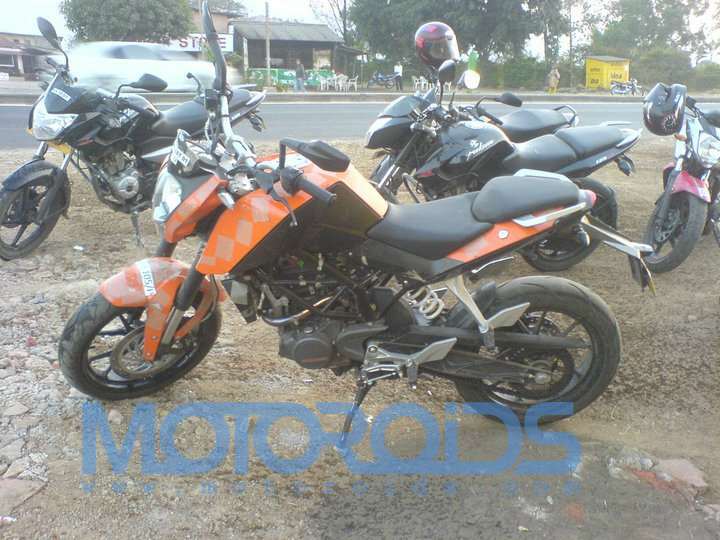
KTM 200 DUKE official specs are out !
ENGINE
Type: Single-cylinder, 4-stroke, liquid-cooled
While nothing new with the format for cylinders, we are glad that the engine is slated to be liquid cooled. Liquid cooled engines for bikes have been doing duty in the international scene since quite some time and for Indian bikes, this seems to be the way to go.
Valve Train: 4 valves per cylinder, DOHC
This will be the second bike to come out of Bajaj plant to sport 4 valve/cyl format. It is good to see that manufacturers are gradually embracing this technology. Coming to look at it, many cars out on our roads are having this format since quite a few years.
Displacement: 200 cc
Bore x Stroke: 72 mm x 49 mm
Power : 19KW (25.4 bhp)
The moment I read this, my jaw dropped and so much that it threatened to hit the floor! Lame attempt at jokes apart, we are mighty impressed by the output of this single cylinder engine. Now all that we wish is that KTM/BAJAJ sees no need to de-tune it for our market.
On some calculations, this is what my observation is:
Power : Weight = 185 bhp/ton and Ninja 250’s P:W = 191 bhp/ton. A difference of merely 6 bhp/ton. Need I say more?
Starting: Electric
Expect a full electric system as seen in the flagship Bajaj- The Pulsar 220.
Transmission/Gears: 6-speed
Yet another first for a bike that is associated with Bajaj and will role out of it’s plant.
Fuel System: Fuel Injection
Bajaj came up with the Fuel Injection with its flagship bike. Later, in interests of higher sales through lower price tag, the fuel injection was dumped for a cheaper fuel system and hence came the ‘Carb’ 220.The latter produced more power from the same motor and that alone says that Bajaj needs to master the art of fuel injection. Theoretically, a carb setup cannot be as efficient as fuel injection can. That will make me say that Bajaj really needs to embrace this technology of fuel injection and master it properly.
CHASSIS
Type: Tubular space frame made from steel
tubes, powder-coated
Front Suspension: WP, Telescopic Upside Down
Forks
Rear Suspension: WP, monoshock
Finally !! A ‘mono’ on a Bajaj.
Suspension travel Front: 150 mm
Suspension travel Rear: 150 mm
Front Brake: 300 mm Disc brake
Rear Disc Brake: 230 mm
After seeing the 220, we are not surprised.
Steering head angle 65°
DIMENSIONS
Wheel base: (1,361 ± 15) mm
That is one compact wheelbase! The bike should be fun to ride, maybe one of the most nimble performers. I feel that on tight corners, R15 owners should beware !!
Ground clearance (unloaded): 170 mm
Seat height (unloaded): 810 mm
Total fuel tank capacity: 10.5 litres
Okay, we are surprised again. And after being used to Pulsar’s fuel tank, we should.
Dry Weight: 125 kg
The first thing that came to my mind after getting to know the weight was L-I-G-H-T. Remember how much praise the R15 got for being lighter than the rivals? Even the 135LS is not very high on weight and all thanks to its favorable power to weight ratio, the bike can surely out performs a few 150cc bikes of our market. And with a dry weight of 125 kgs coupled with 25 bhp, the upcoming KTM will sure be one quick machine.
Now what remains to be seen is the selling price and after sales pricing of this KTM. It may be noted that Bajaj is known for inexpensive spares and we expect a similar story for the KTM series. Fingers crossed!!
